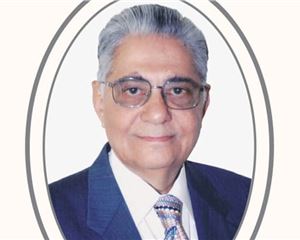Uttarakhand exam leak exposes security gaps
The UKSSSC paper leak has shaken public faith in competitive exams, and chief minister Pushkar Singh Dhami’s commitment to recommend a CBI investigation highlights both the political stakes and the underlying vulnerabilities in India’s secure printing ecosystem
06 Oct 2025 | By Treya Sinha
The recent UKSSSC question paper leak has cast a harsh light on the vulnerabilities of India’s secure printing and logistics infrastructure. Even as chief minister Pushkar Singh Dhami announced that he would recommend a CBI probe into the September 21 incident, the breach reveals persistent gaps in printing protocols, from pressrooms to exam centres.
Within half an hour of the examination commencing, multiple pages appeared online, and protests erupted in Dehradun, quickly spreading across Uttarakhand, reflecting the frustration of thousands of aspirants whose livelihoods depend on government employment.
The CM’s decision to seek a CBI investigation, alongside an ongoing SIT led by a retired High Court judge, marks a significant shift from his earlier contentious remarks, in which he labelled the leak “nakal jihad.”
The CBI recommendation highlights both the political pressure and the extent of the credibility crisis. It also brings renewed attention to a sector often relegated to technical execution: the secure printing and distribution of high-stakes examination material.
A recurring challenge
For India, this is most certainly not the first security breach. Merely in Uttarakhand, in December 2021, the UKSSSC was embroiled in a paper leak scandal traced to a Lucknow-based printing press, RMS Techno Solutions, where question papers were reportedly sold for INR 10–15 lakh each.
In January 2023, the UKPSC cancelled its patwari and accountant exams amid allegations of malpractice. These recurring failures highlight systemic vulnerabilities: weak oversight, gaps in the printing process, and a lack of enforceable security standards.
As per a Times of India report, the 21 September 2025 leak may have originated in Haridwar, allegedly involving a candidate named Khalid Malik, who photographed the paper inside an exam hall and circulated it digitally. Police have suspended two officers and a college professor for security lapses, while the commission has postponed subsequent exams, including one scheduled for October 5, to restore public trust.
Examining printing security
Exam papers may be printed under secure conditions, but vulnerabilities arise at every stage: storage, transport, and local distribution. Even well-monitored pressrooms cannot prevent leaks if chain-of-custody protocols are weak or human actors collude. Unlike currency or election ballot printing, question paper systems largely rely on manual checks, sealed bundles, and minimal digital verification.
There is technology to prevent such breeches. Variable-data printing, digital watermarking, QR-coded bundles, and tamper-evident GPS-tracked containers that can make papers traceable from press to exam hall. On-demand local printing with encrypted digital files, decrypted minutes before the exam, further reduces exposure. Experts say the challenge is not technical but institutional: exam boards often prioritize cost over security, awarding tenders to low-bid vendors with minimal compliance verification.
Attempts at restoring accountability
Dhami’s commitment to a CBI probe signals recognition that internal investigations alone are insufficient to restore confidence. The SIT under a retired High Court judge will continue its inquiry, but the inclusion of a central agency reflects the magnitude of public anger and the need for independent oversight. The CM has also assured protesters that police cases filed against students will be withdrawn.
Sceptics caution that without structural reforms, even a CBI investigation may only delay the next leak. Opposition leaders and student groups argue that systemic transparency, vendor accountability, and rigorous printing protocols are the only ways to prevent recurrence.
A call for reform
For the printing and publishing sector, Uttarakhand’s crisis is a wake-up call. Exam boards must treat secure printing as a governance function, not as a procedural checkbox. Long-term contracts with certified security printers, routine audits, digital traceability, and role-based access controls should become standard. Independent oversight, involving retired administrators, data-security experts, and civil society representatives, can enforce accountability and deter collusion.
The cost of these measures pales in comparison to the social, financial, and political fallout of repeated cancellations.. Every breach represents not just a leaked paper but a broken covenant of trust between the state and its aspirants — and the printing industry plays a tremendous role in safeguarding that trust.
For Uttarakhand’s youth, the promise of a CBI investigation is solely the beginning. True reform requires transparent printing protocols, technological adoption, and enforceable accountability at every stage. Unless these measures are implemented, the state risks a cycle of leaks, protests, and eroded legitimacy.
Industry response
According to Ranesh Bajaj of Vinsak, there is no dedicated audit or certifying authority for security printers in India. Currently, the only certification available is issued by the Indian Banks’ Association (IBA) and that too, exclusively for the printing of MICR cheques.
“As a first step, the Government of India should establish a formal regulatory and certifying body to set standards and ensure compliance across all forms of secure Printing,” he told PrintWeek. “That said, the processes and protocols followed by the leading security printers in the country are robust and effective. If we analyse the recent leaks, it becomes evident that most incidents have originated from printers outside the top tier of certified and reputable firms. Therefore, examination authorities must strike the right balance between cost and security — moving beyond the lowest-price tenders to select vendors who truly meet the standards of secure printing.”
Bajaj explained that these gaps are primarily rooted in human integrity and ethical lapses, rather than technological shortcomings.
He added, “All security documents should incorporate advanced security features, which are regularly updated to counter emerging threats. Leading pre-press software solutions from Jura, Agfa, and Vinsak provide robust protection against counterfeiting. The data streams used for variable printing are encrypted and decrypted at high levels, making leaks at the data transmission stage extremely rare.
Commenting on the issue, Ankit Gupta, president ASPA and joint managing director, Holostik India, said, “The recent Uttarakhand examination paper leak underscores the urgent need to strengthen India’s secure printing and document authentication ecosystem. Incidents like these not only erode public trust but also highlight the gaps in existing processes — from secure printing to last-mile handling and verification. Today, proven physical, digital, and phygital authentication technologies can help eliminate such vulnerabilities. Secure holographic features, tamper-evident packaging, and digitally enabled traceability through QR codes, barcodes, or blockchain-based systems can ensure end-to-end accountability — from the printing press to the examination hall.
He added, “What we need is not just better vigilance, but the institutional adoption of integrated authentication and traceability frameworks — treating exam paper security with the same rigour as currency or identity documents. At the Authentication Solution Providers’ Association (ASPA), we firmly believe that leveraging advanced authentication & traceability solutions and establishing standardised security protocols across all examination boards will be key to restoring confidence, deterring malpractice, and protecting the integrity of our examination systems.”












 See All
See All